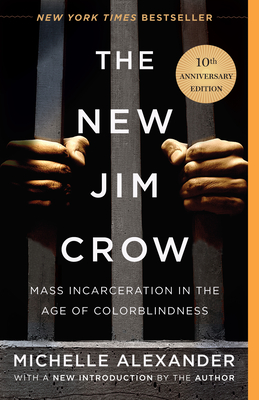The New Jim Crow: Mass Incarceration in the Age of Colorblindness
Michelle Alexander

This is a very good, and thoroughly depressing, book. I was reminded to read it because I read a sort-of endorsement of Bernie Sanders by Michelle Alexander (basically she was arguing against Hillary Clinton and said that Sanders was OK if not ideal).
The main thesis of the book is that the “war on drugs” starting in the 1980s represents a “new Jim Crow” system that, via racially biased enforcement and laws stripping away rights of ex-felons, maintains a racial undercaste much like the original Jim Crow system, but through a nominally colorblind set of policies. Befitting the author’s occupation as a law professor, the argument is very robustly constructed, to the point where it seemed to me by the end that there was very little room for argument. She brings the reader along by sharing her own personal journey as a civil rights lawyer from believing that the legal system was basically fair if consistently enforced, to seeing the war on drugs as a more or less intentionally racially repressive force.
You should read the book, but a brief synopsis of some main points of her argument is as follows:
-Academic and medical studies have established that illegal drug use rates are “remarkably consistent” across races and social classes. This is in contrast to violent crime, which is more prevalent in black communities (although that essentially correlates to unemployment rates), with the two often being conflated in the media and public eye.
-Drug law enforcement, unlike most law enforcement, is extremely discretionary, because drug use itself is typically victimless–enforcement doesn’t typically start with someone “calling the cops."
-It is well-established in academic psychological literature that basically everyone in modern American society, including black people themselves, has unconscious bias against black and Latino people–in addition to whatever degree of conscious bias remains.
-The US prison population has skyrocketed since the 1980s–as Bernie Sanders often highlights, we have more people in jail than any other country including China–and this is mostly composed of black and Latino people imprisoned for drug offenses.
-Court decisions have systematically stripped away fourth amendment protections against arbitrary search and seizure, so that police can search virtually anyone at any time for any reason or no reason. Among other things, Alexander discusses case law establishing that it is acceptable to do a drug search after a “pretextual stop” for any of the myriad traffic violations that basically everyone constantly commits (e.g. not turning your turn signal on the proper distance before a turn–do you even know what that distance is??), that searches with no probable cause are allowable as long as they are “voluntary” (how many people know they are allowed to say no to a cop’s “request” for a search, and, particularly in the case of minorities, how many actually feel that it would be safe to say no?), that a signal from a drug-sniffing dog can count as probable cause (so they can bring a dog to “search” you anyway), and that officers are allowed to use race as a factor in determining who to stop, as long as it is not the only factor.
-Mandatory minimum sentencing often results in very long minimum sentences for even minor drug crime (and of course sentencing rules for crack and cocaine differ in a way that is effectively racially biased); this can in turn be a very strong incentive for innocent people to plead guilty and accept a bargained-down sentence.
-It is perfectly legal to discriminate against ex-felons in all the ways that Jim Crow was used to discriminate against black people, including employment, housing, and voting rights.
-The court system has made it virtually impossible to bring a 14th amendment claim against a law for being enforced in a racially biased fashion. Case law has established that only explicit evidence of racially biased motivation by law enforcement is admissible evidence; statistical evidence is not admissible; so as long as police are smart enough not to say “I hate black people” outright, they are free to enforce the law in a racially biased manner.
I told you it was depressing. In the end, it almost doesn’t matter whether this system was intentionally set up to repress minorities, but I think Alexander makes a strong argument that it was–evaluating the “get tough on crime” rhetoric employed at the outset of the war on drugs and its racial coding.
The book is, however, also endlessly interesting. Alexander discusses the history of interracial populist movements and upper class use of race to split and defuse them. She talks self-critically about the turn of the civil rights establishment in the ’80s and ’90s to focus on affirmative action and more or less ignore mass incarceration. She talks about the role of “colorblind” rhetoric and the role of prominent black success stories like Barack Obama in diverting public attention from the issue of mass incarceration.
In the end, her conclusion is that because the system has so many interlocking and self-reinforcing parts, the only thing that could put an end to it would be a broad-based popular movement. As I mentioned, she only gave tepid support to Sanders, but he is the only candidate who ever even mentions mass incarceration, and after reading this book, it is (even more!) difficult for me to imagine supporting anyone else while he is still in the running.